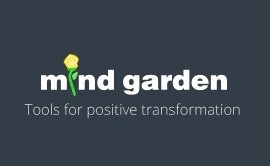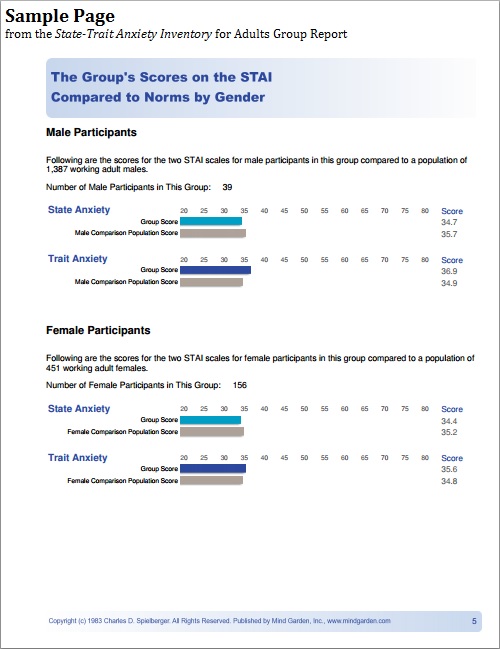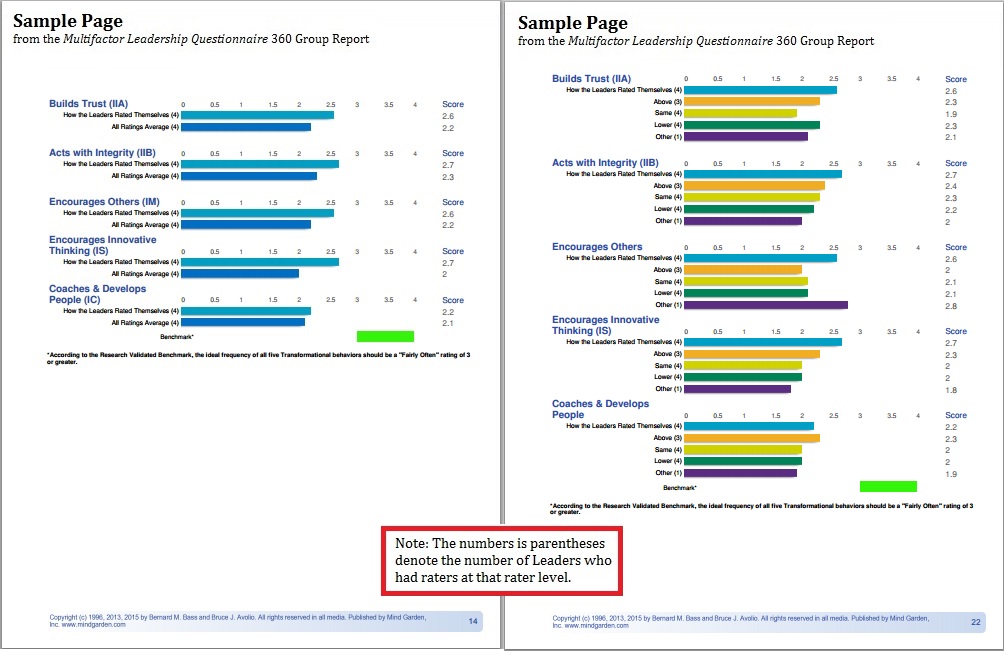Group Reports
Posted on 30 June 2015 (Updated 15 November 2017; 29 March 2018)
Blog by Issa Coultas

In the past couple of years, Mind Garden has developed and released over 30 Group Reports for our products including the MLQ, MBI, and STAI. We think Group Reports are great because they can save you the time it can take to calculate lines and lines of data. All Group Reports include calculations of group averages by scale, group averages by item, and group standard deviations. Many of our Group Reports also include strategies for developing desired behaviors.
One of the benefits of using a Group Report is that the data in your Group Report can either represent participants in one campaign or across multiple campaigns. This is a great feature if you want separate data download files for several groups, but still want to see the overall data trends. Some of our instruments depend on demographic information to create meaningful data comparisons. It can be a real headache to parse through your data and separate participants into different categories. The Group Report makes it easy – group averages by scale are automatically filtered by the appropriate demographic questions (e.g., gender, age, status) for each instrument. For instance, the Social Skills Inventory (SSI) comparisons depend on the gender of the participant because of gender differences in social skills found in normative samples. In the SSI Group Report, the reporting of group averages is split so that your male participants are compared with a male normative group and your female participants are compared with a female normative group. Note, only some of our instruments require filtered populations. If the instrument does not, all group participants’ data will be calculated and reported together. Be sure to check the report section titles on the product page to see if your participants will be filtered or not.
Group Reports for Different Roles
We at Mind Garden recognize that our customers use our services for a variety of reasons depending on your role. Many of our products cater to specific audiences because researchers and consultants do not require the same services. Group Reports also often cater to specific audiences. Below are highlights from some Group Reports and what you can expect to find.
Group Reports for Researchers:
Group Reports for researchers aim to deliver group data in a clear-cut and effective manner. Guides and strategies for development are not included as they are superfluous to research needs. These Group Reports detail all data averages (by items and by scale) as well as standard deviations. If other breakdowns are commonly used for the instruments, those will also be available.
STAI
A good example of such breakdowns is the State-Trait Anxiety Inventory for Adults™ (STAI-AD) Group Report. In this report, group data is compared to norms in two ways: as an overall group and as split by gender. A sample page from the STAI for adults Group Report is shown below.
MLQ Multi-rater Group Report
All Group Reports for multi-rater instruments make the distinction between participants (Leaders) and their raters. Group averages by item, group averages by scale, and group standard deviations are displayed with data from participants’ self-ratings separate from the rater data. The Multifactor Leadership Questionnaire™ (MLQ) Multi-rater Group Report (or the MLQ 360 Suite Group Report for MLQ 360 Suite orders) is our best selling Group Report. An exciting feature of this report is that rater data is displayed by rater levels (Above, Same, Lower, and Other organization levels relative to the participant) in addition to a display as an overall rater group. Sample pages from the MLQ Multi-rater Group Report are shown below.
Group Reports for Consultants or HR Managers
We know that consultants and HR managers don’t just need to know if scores are low or high – they need to know how to improve the team or group. Because of this, many of our Group Reports offer guides and suggestions for developing your group. All developmental information is distinctive to its particular instrument and can be found after the data sections in the reports. Some instruments have workbooks and guides entirely devoted to development – if you are using such an instrument (e.g., MLQ), the developmental information will not be in the Group Report. The MLQ Multi-rater Group Report, for example, can be applied effectively for development with the use of the MLQ Leader’s Workbook (the MLQ 360 Leader’s Report, Executive Summary, and MLQ Leader’s Workbook (Custom) can be purchased together with the MLQ 360 Suite) or the MLQ Trainer’s Guide.
Maslach Burnout Toolkit™
The Maslach Burnout Toolkit Group Report is an excellent developmental tool. The report reviews group results from both the Maslach Burnout Inventory™ (MBI) and the Areas of Worklife Survey (AWS) together to provide two ways of looking at burnout. The MBI looks at the effects of your group (how burned out the group is), and the AWS looks at your group's perceptions about the organization in which they work. The Group Report is unique in looking at both the situation for individuals in the organization (their burnout) and their perceptions about the organization that might be cause for the burnout. You can then take action to address the source of burnout as evidenced by the AWS while understanding the level of burnout as indicated by the MBI.
SSI
The Social Skills Inventory (SSI), also known as the Self-Description Inventory, evaluates verbal and non-verbal communication skills. The SSI Group Report identifies strengths and weaknesses averaged across all group participants and it reports normative comparisons by gender. Besides data, the SSI Group Report features a section on strategies for improving communication skills, including specific techniques to develop each of the six SSI scales.
How to Purchase a Group Report
Go to Our Products, and click on the instrument you would like to use. Scroll through the available products on the Buy It tab and click the Group Report for the form you wish to use (e.g. Self Form, Rater Form, Multi-rater Form) Here, you can read any additional information about this particular Group Report and you can view a sample report. Click “Add to Cart” to add the Group Report to your shopping cart. This purchase will create a campaign in your Transform account. Log in to add participants.
The purchase of a Group Report must be accompanied by purchase of Transform™ Survey Hosting since there must be data available for the Group Report to run. Your campaign must have at least one completed assessment before the Group Report will generate.
You can assign a Norm name across campaigns to get aggregate normative data in the Group Report. Otherwise, the Group Report will only represent data from the associated campaign.
Group Report Customization
For an additional fee, we can customize your Group Report to include your own instrument and/or demographics. Visit our Customization page for information about features, process, and pricing.
Glossary of Terms
View our full list of terms here.
Campaign
At its simplest, a campaign is a grouping of participants. You can have as many or as few participants in a campaign as you wish. You can create as many campaigns as you need at absolutely no charge! We recommend you treat campaigns as an organization tool. Try breaking up your participants by Job Title (e.g., “Top management” or “Supervisors”) or by Work Group (e.g., “Store #855” or “Product Development Team”). This will allow you to visualize your different groups more clearly and help you analyze large quantities of data. You can easily combine data from multiple campaigns outside of our system after download.
Form
The term "form" is most often used to distinguish the self-rating from the other-rating versions of an assessment (e.g. Self Form vs. Rater Form).
Forms can also be distinguished:
- by age group (e.g. FFWEL Adult Form or FFWEL Teen Form)
- by other target population descriptions (e.g. CSEI School Form or POIS Manager Form)
- to describe the mindset used while completing the assessment (e.g. FES Real Form vs. FES Ideal Form)
- if you use our customization services (your project will be called your "Custom Form") to distinguish your customization from the original assessment

 SEARCH
SEARCH LOGIN
LOGIN  BLOG
BLOG
 CART
CART
